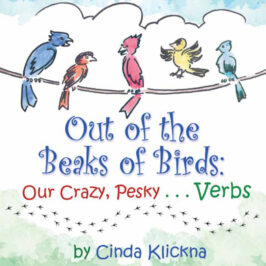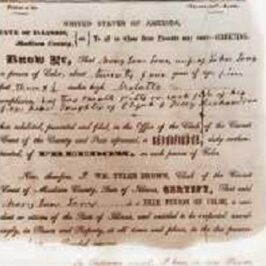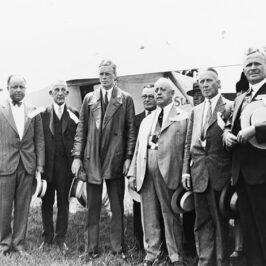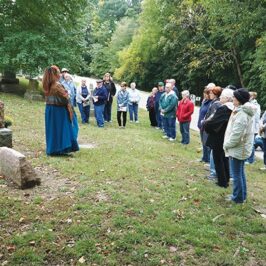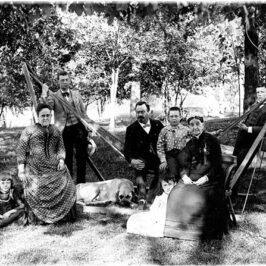The Mysterious Bard of Sangamo includes poetry, Sangamon history, and solving a mystery
By Cinda Ackerman Klickna

In 1979 John Hallwas was a young professor, doing research about what early Illinois settlers would have read. While scouring through newspapers from the 1830s, he found poems in the Sangamo Journal that caught his attention, each simply signed “H.” Hallwas wondered who the poet was and kept searching, finding a total of 71 poems published between 1831 and 1846.
Hallwas compiled the poems and in 1982 published The Poems of H. – The Lost Poet of Lincoln’s Springfield. Then, he set out to identify the poet.
Today we know the identity of the poet as John Hancock from England. And, we all can hear his well-crafted poetry through the recently released video monologue called The Mysterious Bard of Sangamo, produced by the Illinois State Historical Society (ISHS). It will be shown at the Nov. 16 Sangamon County Historical Society meeting at Lincoln Library. Bill Furry, executive director of ISHS, produced and directed the video that took over two years to complete. Hallwas, now professor emeritus at Western Illinois University, wrote the script that weaves together Hancock’s rhyming poems.
The video combines the poetry with stunning videography by Crowdson Creative, music by Wild Columbine, details of local history, and excellent acting by Victor Holstein, who portrays Hancock.
Holstein, a 1998 graduate of Glenwood High School in Chatham who now lives in Chicago, had roles in many Springfield productions. More recently he’s acted in “Chicago Med” and “Chicago PD.” During the pandemic, with acting work shut down, he pursued research about Springfield history. He found works by Hallwas that led to meeting Furry who asked him to play the role of Hancock. “This was challenging but also rewarding and fascinating to learn about such an obscure person,” Holstein says. “I felt a connection to Hancock, as we both experienced the struggling artist concept, striving to make it, and a love of our town.”
The production opens with a video of snow blowing across a field as a shivering Hancock, carrying firewood, enters a grocery store, filmed at the Elijah Iles House. It is 1833. He says,
“Now the wild winds blow,
And fast falls the snow…
From British shores to Sangamo I came,
In the summertime, that I might learn
To know the West, and maybe find a home.
But now, how changed does everything appear,
Covered with snow at this harsh time of year.”
Hancock’s poetry – fun, serious, reflective – provides an insight into the customs of the Springfield prairie in the 1830s and 1840s. He applauds settlers such as Enos and Iles, challenges the fight to remove Indians during the Black Hawk War, and reflects on his life.
He writes about wolves, women and whiskey. We hear about “the long, loud howl of wolves,” during a winter night. We learn his view of women,
“When a charming lass I see
I think how expensive she must be
When she’s dressed in all her colors
Good Lord, I cry, what waste of dollars.
Indeed, I like a sparkling eye
But just as well as beefsteak pie.”
And his view of whiskey:
Now, though you see me as a dunce,
Listen, my friends, with patience once,
Nor, at a jump, prohibit drinkin’.
You may as well prohibit thinkin’.”
Hallwas did extensive research to piece together what he could about Hancock. One ad in a Springfield newspaper presented a clue. It read, “JOHN HANCOCK informs the inhabitants of Springfield and its vicinity that he keeps an assortment of good liquors, for their accommodation, in Mr. Jabez Capps’ late Grocery, opposite the post office.”
“All you that do good liquors choose,
Come taste my Gin, if not my muse.”
Hallwas believes Hancock worked at Capps’ store and referred to himself as the muse. Capps, from London, had opened a store in the 1820s (on Jefferson between First and Second). Hallwas tracked down that Hancock was probably born in the late 1790s, came from the Cornwall area of England, and had attended the Inns of Court in London. Hallwas found 20 poems in a London publication during the 1820s, all signed J.H., that were similar to those from the Sangamo Journal poems.
Hallwas: “Hancock was well educated. His poetry mentions Shakespeare, Milton, Pope and others, and often imitates Robert Burns, who was popular at the time. He uses Latin and French. He had traveled throughout Europe and had studied in London.” He produced “what may be the finest poetic achievement in the Midwest before the 20th century.”
Cinda Ackerman Klickna, a former English teacher, found the Hancock poetry exceptional and hopes English teachers will use the poetry in their classrooms.


